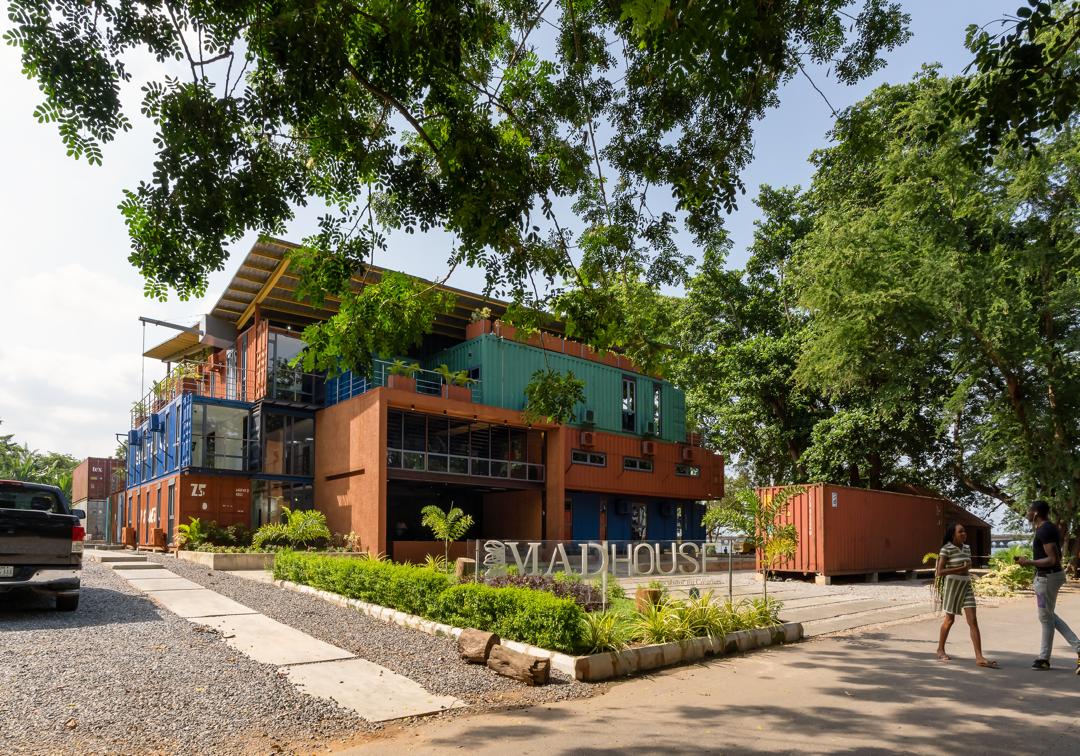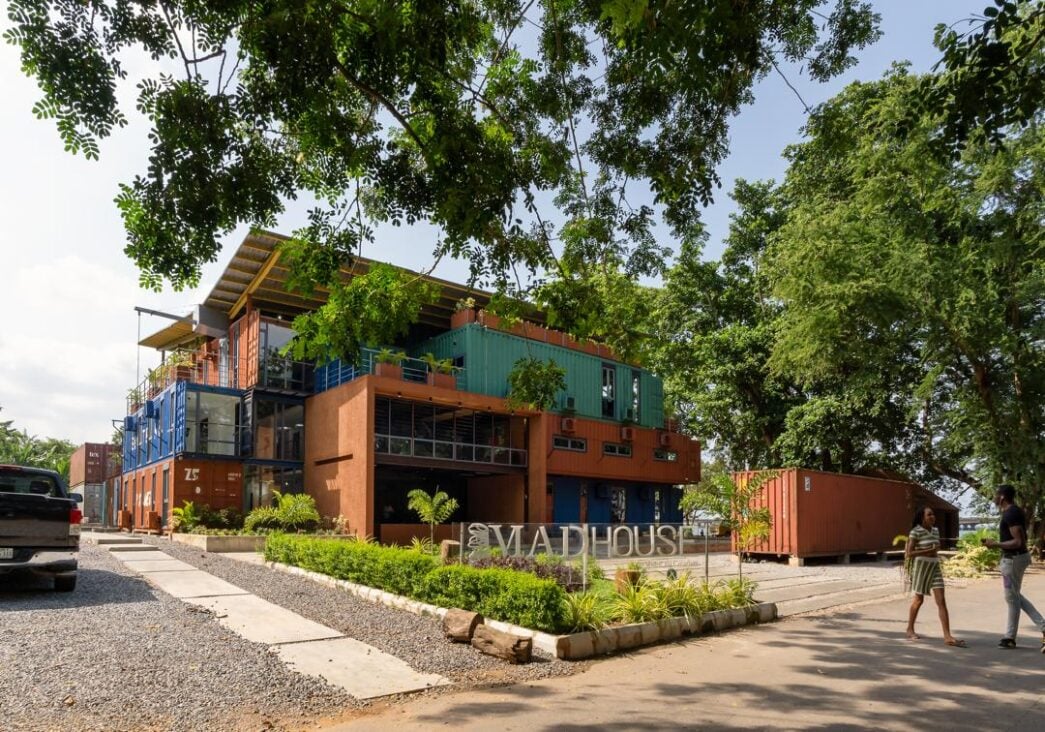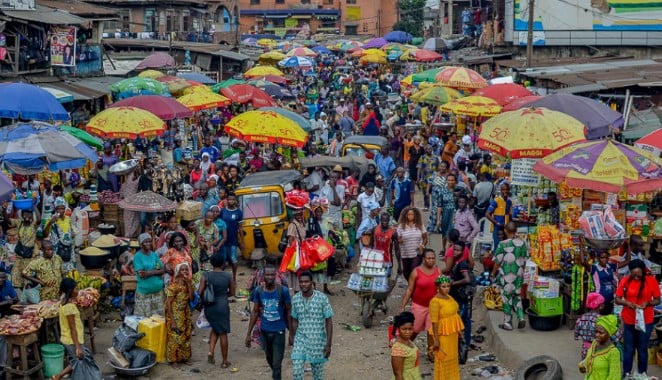For decades, Nigerian skylines have been filled with borrowed blueprints, glass-and-steel imports, and generic designs that could belong to almost any city in the world. Today, a quiet revolution is taking shape. It is called NANA – the New Alternative Nigerian Architecture.
At its core, NANA is about designing in a language that is ours, culturally grounded, climate-sensitive, and material-led. It proposes an architecture born from the soil yet confident enough to stand alongside any global style. The question now is whether this renaissance has truly taken root, or if it remains a bold experiment still finding its footing.
The origins of NANA trace back to the partnership of Adeyemo Shokunbi and Patrick Koshoni, co-founders of Patrickwaheed Design Consultancy (PWDC). Together, they developed a philosophy they call ethno-tropical contemporary, a fusion of cultural heritage, climate-conscious planning, and modern forms.
For them, it is not just about aesthetics, but also about the smart use of local materials, Nigerian craftsmanship, and a way of building that responds directly to our tropical realities.
Advertisement
The first spark for NANA came unexpectedly. A photograph of a young boy standing in front of a mud house led Shokunbi to reflect deeply on materiality. What would it mean for that child to grow up in such an environment, in close contact with earth walls that carried cultural memory and climate logic? Could those same materials be reimagined, elevated, and innovated into contemporary architecture?
The question found its first answer in MAD House at the University of Lagos, a creative enterprise and innovation laboratory. Conceived as a space for experimentation, MAD House was where the ethno-tropical contemporary principles began to manifest as a new architectural language. The building tested how laterite and other traditional materials could be applied in fresh, innovative ways, laying the foundation for what would later crystallise as the NANA movement.
That exploration reached new heights in the Abijo Mosque, designed for The Crescent Bearers in 1939, Lagos, in Abijo GRA, just off the Lekki-Epe Expressway. Here, the artistic licence of an architect, sharpened through many conversations with master-builder Baba Demas Nwoko, found full expression. The mosque’s walls are finished with a laterite tyrolean texture, perforated reused pavers filter sunlight, and high-level louvre windows invite natural airflow for passive cooling. The result is a space that feels both grounded in tradition and boldly contemporary.
Advertisement
Recognition soon followed: shortlisted for the Abdullatif Al Fozan Award for Mosque Architecture (2021 cycle), nominated for ArchDaily’s Building of the Year, and most recently nominated for the prestigious Aga Khan Award for Architecture. Around the same period, Shokunbi was honoured with the Innovative Design Excellence Award (IDEA) by the International Federation of Interior Architects/Designers as Architect of the Year, specifically for sustainability innovation.
But NANA is not confined to projects. Through an Obel Foundation Teaching Fellowship, Shokunbi introduced its principles at Yaba College of Technology, where students experiment with earth, bamboo, timber, and stone. Once dismissed as “poor man’s materials,” these resources are being reframed as sustainable, high-performance building solutions.
The urgency could not be more pressing. Nigerian cities are expanding rapidly, yet much of the construction remains rushed, generic, and unsympathetic to climate or culture. At the same time, public discourse is shifting. Young Nigerians are increasingly asking why our cities look imported. One observer put it simply: “Our ancestors built better for this climate than many modern architects do.”
Challenges remain. For NANA to move from philosophy to mainstream, it must win over policymakers, developers, and financiers. Building codes need to support local materials, and investors must value architecture that lasts longer and costs less to maintain. Crucially, perceptions must change; earth-based design is too often equated with poverty, when in fact it offers elegance, durability, and sustainability.
Advertisement
Ultimately, architecture is never just about shelter; it is about identity. Every NANA project is an argument that Nigeria can create contemporary spaces without erasing its soul. If successful, the movement could transform skylines, employ local artisans, strengthen the economy, and offer resilience against environmental and economic pressures.
And the story is still unfolding. A recent project, the Mausoleum in Ilase, Osun state, a small town outside Oshogbo, shows how far the innovation has come. Built using laterite sourced directly from the site, the structure employs the now-refined NANA Tyrolean texture, forming a contemplative pavilion of strength and dignity. It is both a place of memory and a symbol of how traditional materials, when reimagined, can achieve timeless beauty.
To carry this vision forward, a new studio, NANA Collective, has been established to champion the philosophy and drive the movement into its next phase. The true measure of success will be when Nigerians no longer need to search for an “alternative” architecture, because identity itself has become the norm.
Ayoola Ajanaku is a communications and advocacy specialist based in Lagos, Nigeria
Advertisement
Views expressed by contributors are strictly personal and not of TheCable.











